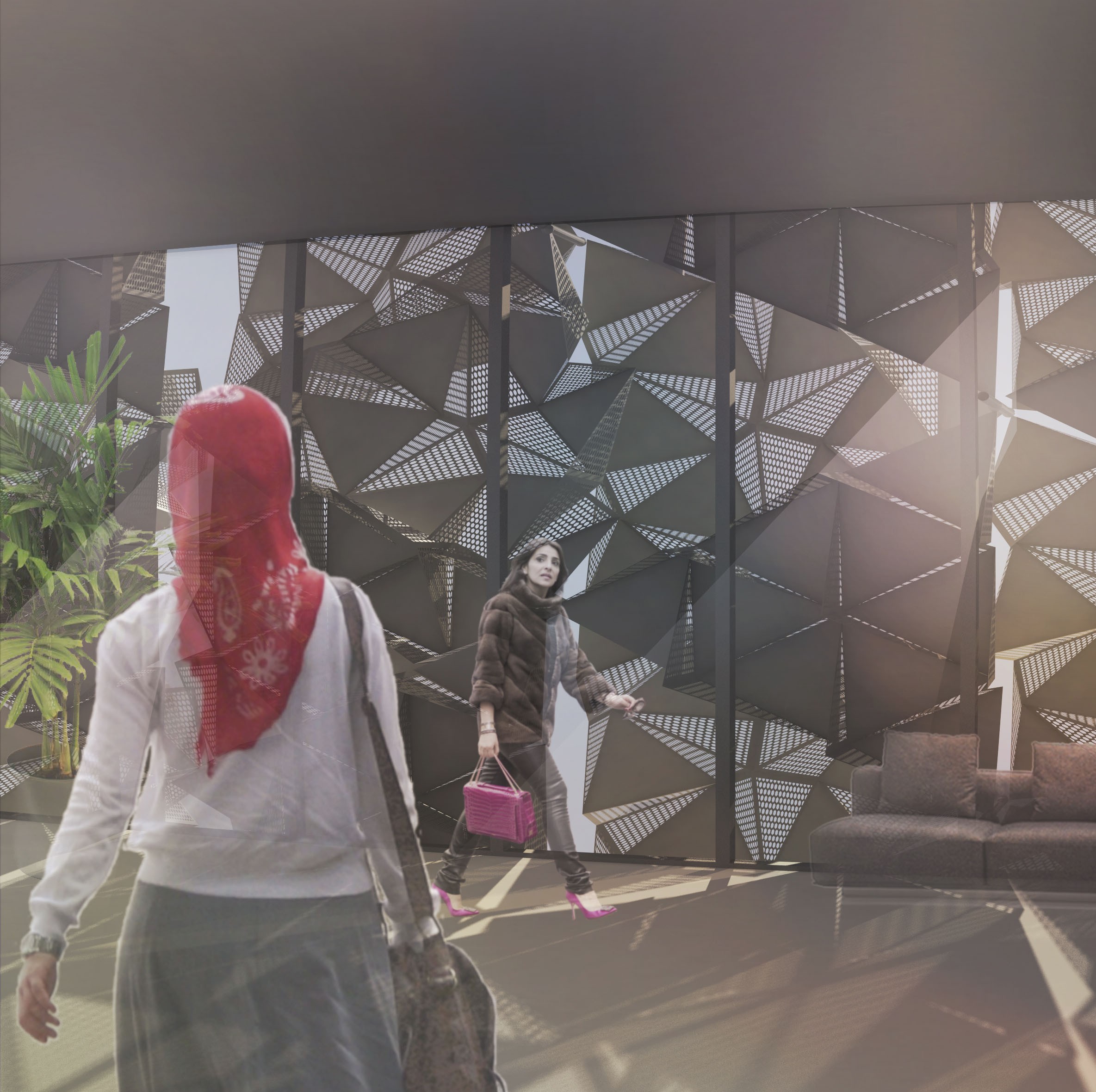 Thermal, acoustic and lighting comforts are fundamental aspects in the design of sustainable or resource efficient buildings. The need for low-impact structures is compelling in a world dominated by power demand and threatened by energy shortage. In order to respond to this need, our work has focused on a performative, environment-responsive structure that exploits rigid origami folding and deployability, inspired by features derived from the natural world through a biomimetic approach. Origamis have recently become an inspiration for engineers, architects and designers, leading to many types of applications. The concept of origami has been tailored for a specific geometry, chosen as a module of an adaptive solution able to change the relevant degree of openness by adjusting its spatial configuration. These modifications in the structure happen in response to the variations of environmental parameters like lightning, noise and temperature, all recorded by a network of embedded (micro)sensors. The structural deployment is induced by linear electric motors with a discrete positional control logic. The actuation is set at some key points, chosen on the basis of the origami kinematics, in order to take advantage of the origami geometries to create complicated movements with a linear actuation. Independently of the scale, at varying physical properties of the panels mounted on the frames, the proposed solution can have different applications for near-future buildings and outdoor pavilions: in interiors for sound absorption and acoustic insulation; in exteriors as a shading, UV filter or light refraction system. In the latter case, the adoption of e.g. dye-sensitized solar cells as panels can also promote the (at least partial) self-powering strategy for the adaptive structure.
The efficacy of the proposed solution stands in promoting building efficiency and improving the comfort performances for some site-specific applications, standing as a possible answer to one of today’s main urban challenges.
Thermal, acoustic and lighting comforts are fundamental aspects in the design of sustainable or resource efficient buildings. The need for low-impact structures is compelling in a world dominated by power demand and threatened by energy shortage. In order to respond to this need, our work has focused on a performative, environment-responsive structure that exploits rigid origami folding and deployability, inspired by features derived from the natural world through a biomimetic approach. Origamis have recently become an inspiration for engineers, architects and designers, leading to many types of applications. The concept of origami has been tailored for a specific geometry, chosen as a module of an adaptive solution able to change the relevant degree of openness by adjusting its spatial configuration. These modifications in the structure happen in response to the variations of environmental parameters like lightning, noise and temperature, all recorded by a network of embedded (micro)sensors. The structural deployment is induced by linear electric motors with a discrete positional control logic. The actuation is set at some key points, chosen on the basis of the origami kinematics, in order to take advantage of the origami geometries to create complicated movements with a linear actuation. Independently of the scale, at varying physical properties of the panels mounted on the frames, the proposed solution can have different applications for near-future buildings and outdoor pavilions: in interiors for sound absorption and acoustic insulation; in exteriors as a shading, UV filter or light refraction system. In the latter case, the adoption of e.g. dye-sensitized solar cells as panels can also promote the (at least partial) self-powering strategy for the adaptive structure.
The efficacy of the proposed solution stands in promoting building efficiency and improving the comfort performances for some site-specific applications, standing as a possible answer to one of today’s main urban challenges.
Principal academic Tutor
Stefano Mariani, Department of Civil and Environmental Engineering, Politecnico di Milano
Academic Tutors
Francesco Braghin, Department of Mechanical Engineering, Politecnico di Milano
Eugenio Brusa, Department of Mechanical and Aerospace Engineering, Politecnico di Torino
Valter Carvelli, Department of Architecture, Built Environment and Construction Engineering, Politecnico di Milano
Stefano Invernizzi ìDepartment of Structural, Geotechnical and Building Engineering, Politecnico di Torino
External tutor
Lodovico Migliore, MIGLIORE+SERVETTO Architects
Team members
Silvia Andreozzi, Mathematical Engineering, Politecnico di Torino
Gaia Ilenia Bessone, Interior Design, Politecnico di Milano
Matteo Botto Poala, Architettura, costruzione e città, Politecnico di Torino
Martina Bovo, Architecture, Politecnico di Milano
Silvia Fernandez de Alaiza, Architecture, Politecnico di Milano
Emanuele Giargia, Mechanical Engineering, Politecnico di Torino
Alessandro Niccolai [Team Controller and Communication Coordinator], Mechanical Engineering, Politecnico di Milano
Viola Papetti, Mechanical Engineering, Politecnico di Milano
